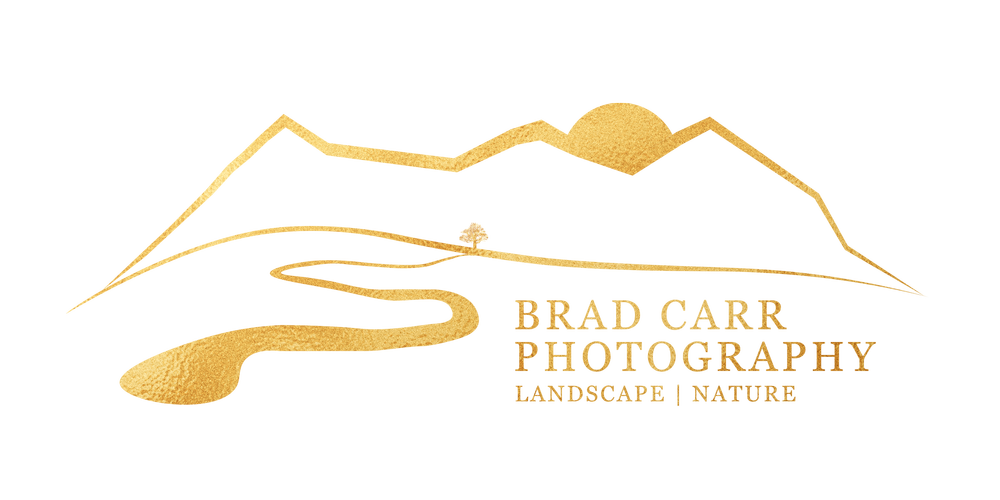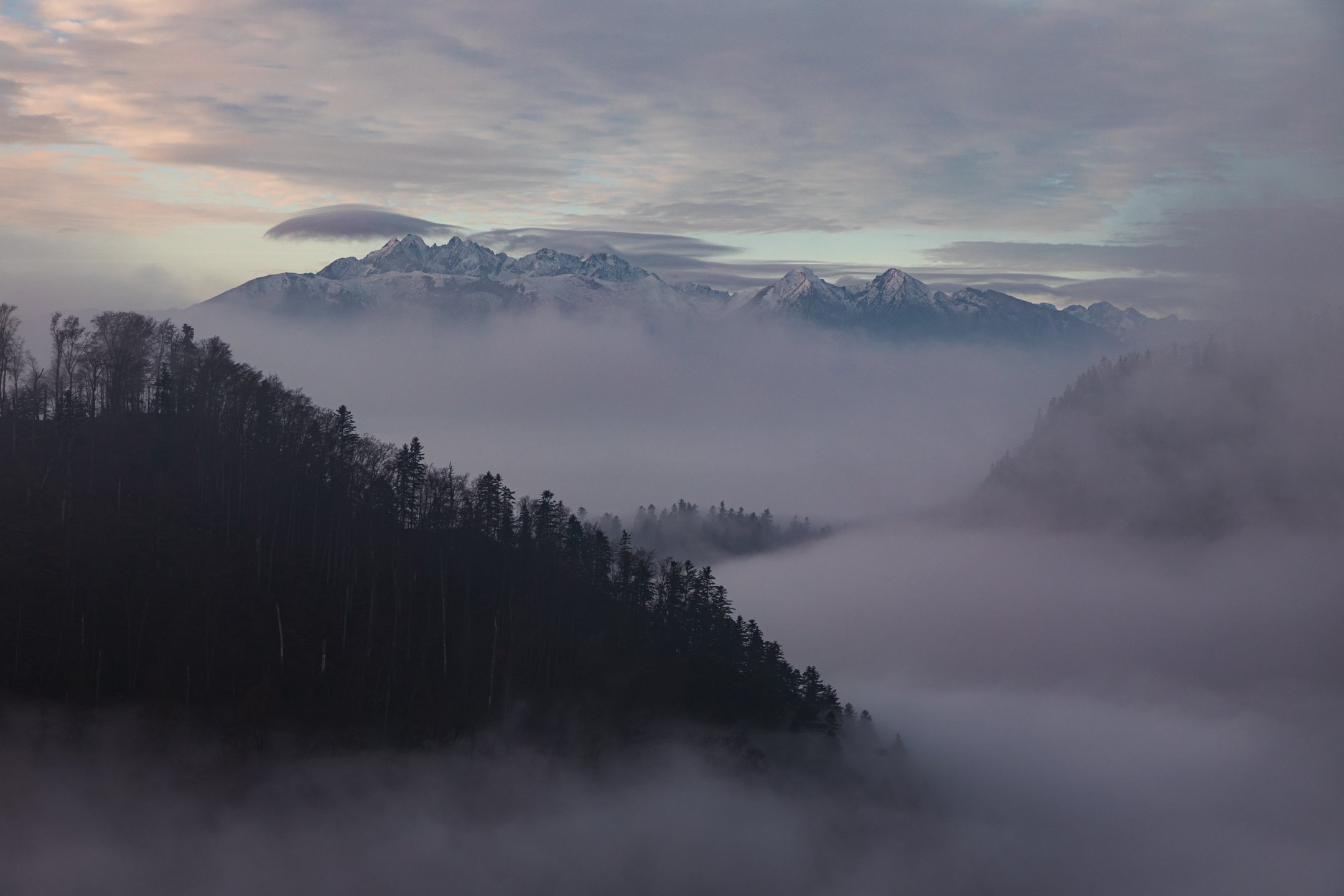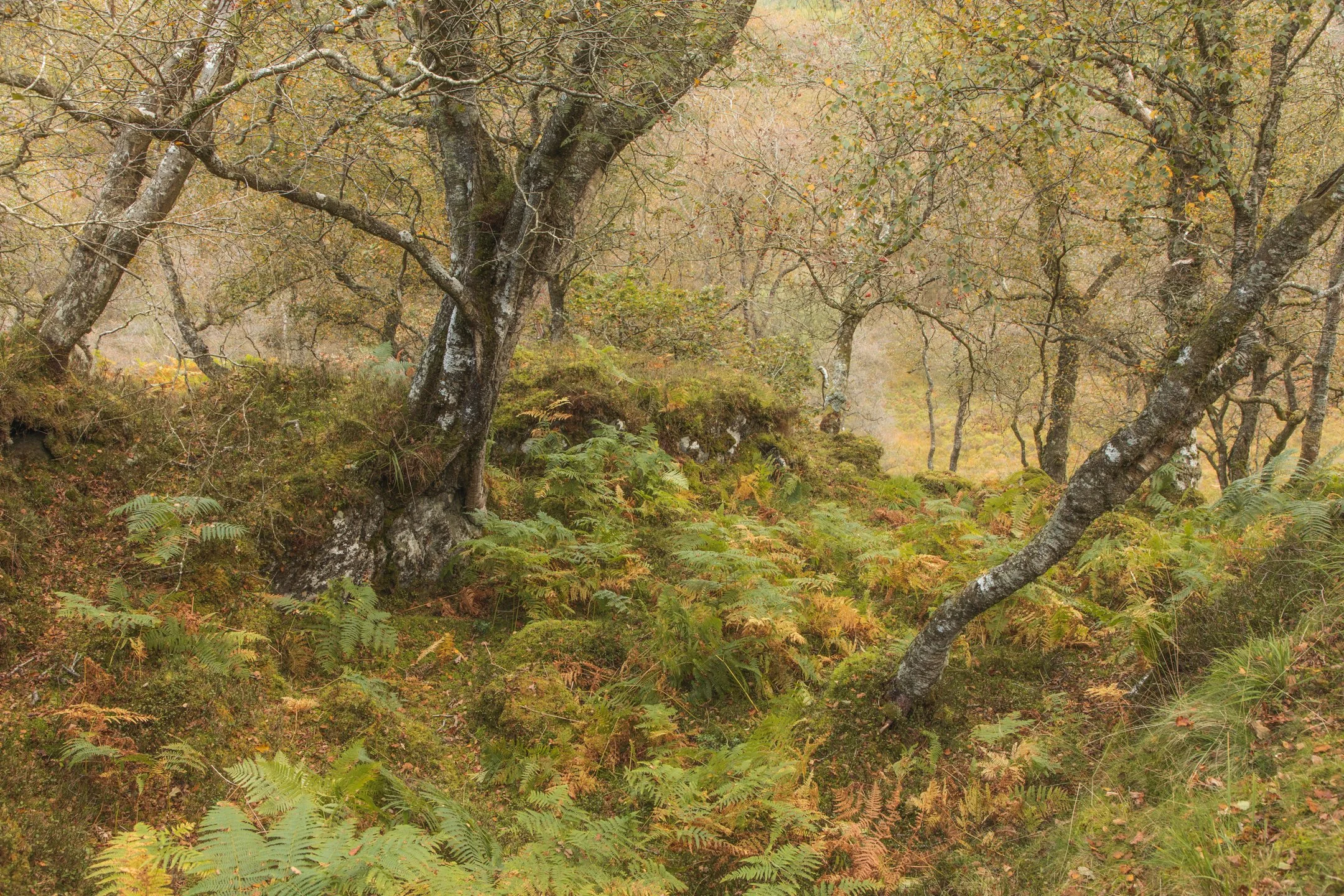As I gaze out over the vast expanse, I am transported back to a world of distant dreams, and I wonder whether they were, in fact, memories.
So many times over the past few years, I have been led to a place for the first time and experienced a feeling of familiarity, as though I have stood there many times already.
This is such a place. Five-hundred metres up on a small rocky outcrop in a foreign land, I am far away from everything that I thought I had known.
Silhouettes of pine trees dominate the horizon and appear as dark brushstrokes against a wash of violet and mauve; the kind of fleeting colours that are only visible during these ephemeral sacred hours. Beyond the trees, snow-covered peaks of distant mountains float serenely above an advancing ocean of fog.
As the fog rises from the valley beneath me and wraps itself around me in the warmest of embraces, my soul feels a sense of safety and peace. It is during these sacred hours, when the earth becomes a sanctuary of temporary silence, that two worlds meet, and I feel like I have returned to the home that I have been eternally longing for.
The camera is the bridge that connects these two worlds. Not only does it capture what it sees in the external world that is so familiar to us all, but it reflects, at the same time, the inner world of the artist; one that is completely unique and so often unknown and unseen, even by the artists’ eyes at times.
The eyes are a window to the soul, and for many of us, that soul has been abandoned and forgotten throughout our years here on earth. Just one look at the news headlines on any given day is a stark reminder that many of our bridges have been built so long that it is difficult for us to remember where we came from, and what we were when we entered this familiar world.
Another world exists inside of me, as it does inside of you, too, and it is in the safety of this inner sanctuary that our souls reside, buried somewhere beneath the wreckage and debris of our personal and collective pain and suffering, where they are left clinging onto and protecting our fragile innocence.
These worlds are our own original creative masterpieces; and many of us, myself included, have been so desperate to tear down the walls that have guarded these inner worlds from the demons that patrol the outer one for an eternity.
In my own case, my early childhood experiences and encounters with demons in the outer world have played a vital role in the formation of my rich and vibrant inner world. The only escape from the pain of my childhood was to retreat across the bridge into the safe confines of my inner sanctuary and build the walls high and wide to keep it guarded and protect, at all costs, my own innocence.
Many of my happiest childhood memories are from the times that I spent in solitude; those precious moments spent curled up with my head in a book or role-playing outdoors in the muddy no-man’s-land that was my garden with my tanks and toy soldiers. In later years, this evolved into a world of fantasy as I locked myself away in my bedroom and escaped into post-apocalyptic landscapes and magical realms as various characters in computer games. This is a story that is shared by many, I am sure, as we have sought to escape the tragedy of our own existences.
Though my own ‘escaping’ was seemingly innocent, it took me decades to understand the depths of the effects that it was having on my sense of self, and it took for me to reach a dark place in my mid-twenties for me to begin piecing together the puzzle of my life and find the courage to revisit some of my most painful memories; the points at which I had abandoned pieces of my own soul as a means of safety and survival.
This innate ability to do whatever necessary to ensure our survival and gain acceptance to the ‘tribe’ throughout our early years, even if that means sacrificing a fundamental part of who we are; a piece of our own soul, is what makes us human beings so intelligent.
Survival is essential as we navigate the earliest and most treacherous stages of our lives, but there comes a point when it is no longer enough to merely stay alive, and we must shift our efforts towards living beyond the mode of survival in the outer world; towards truly thriving here on earth.
This meant, for me, that the desperate urge to share more of my inner world with the outer world became too strong for me to ignore. I had to find the courage to open my sensitive heart up, face my fears in the form of the demons that now haunted me in my mind, and reveal the eternal beauty that was locked away in the corner of my heart where the light of my fragile innocence still dwindled.
With reference to Donald Kalsched’s book titled, ‘Trauma and the Soul’.




